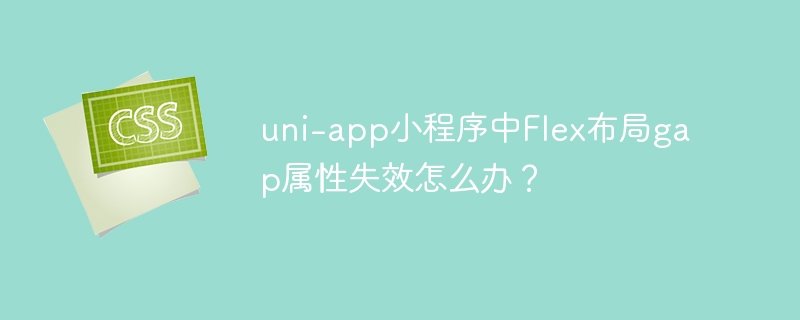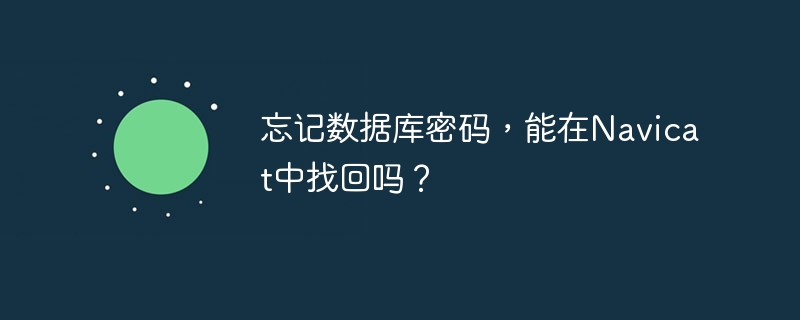
本文深入探讨了在react应用中结合Firebase构建评论系统时,删除嵌套回复后ui无法同步更新的问题。核心在于RepliesSection作为非受控组件导致的状态冗余与不同步。教程将详细分析现有代码的不足,并提出采用受控组件模式、集中化状态管理以及确保不可变数据更新的解决方案,以实现评论系统UI的即时、准确响应。
1. 问题背景与现有实现分析
在构建一个具有评论和回复功能的系统时,我们通常会遇到一个挑战:当用户删除一个回复时,后端数据库(如firebase firestore)中的数据已成功移除,但前端ui却未能立即反映这一变化,需要手动刷新页面才能看到正确状态。这通常指向了react状态管理与数据流设计中的深层问题。
当前实现中,数据结构如下:
- 评论 (Comment):包含评论文本、作者、头像、关联的菜谱ID以及一个replies数组。
- 回复 (Reply):作为replies数组中的对象,包含回复文本、作者、回复ID等。
核心问题代码存在于RepliesSection.js和Comments.JS之间的数据流。Comments.js通过Firebase的onSnapshot实时监听评论集合,并将获取到的评论数据 (comments state) 传递给SingleComment组件。SingleComment再将评论的replies数组作为onReplies prop传递给RepliesSection。
RepliesSection组件的关键代码如下:
const RepliesSection = ({ onReplies, /* ... */ }) => { const [repliess, setReplies] = useState(onReplies); // 问题所在 // ... const deleteReply = async (replyId) => { // ... 从Firestore获取评论文档 const updatedReplies = getSingleCommentData[0].replies.Filter( (reply) => reply.replyId !== replyId ); await updateDoc(docRef, { replies: updatedReplies }); setReplies(updatedReplies); // 更新本地状态 }; // ... return ( <Stack spacing={2} width="800px" alignSelf="flex-end"> {repliess && Array.isArray(repliess) && repliess.length > 0 && repliess.map((rep) => { /* ... */ })} {/* ... */} </Stack> ); };
这里存在几个关键问题:
- 非受控组件模式 (RepliesSection):RepliesSection组件通过useState(onReplies)初始化了它自己的repliess状态。这意味着它从onReplies prop接收到初始数据后,就不再监听onReplies的变化。当deleteReply函数被调用并成功更新Firestore后,它只更新了RepliesSection内部的repliess状态,而没有通知其父组件SingleComment或祖父组件Comments。即使Comments组件的onSnapshot成功捕获到Firestore的变化并更新了其自身的comments状态,这个更新也无法通过onReplies prop传递给RepliesSection,因为RepliesSection已经有了自己的内部状态。
- 状态冗余与不同步:系统中有两份关于回复列表的状态:一份在Comments组件的comments数组中(通过onSnapshot与Firestore同步),另一份在RepliesSection组件的repliess状态中(只在deleteReply调用时更新)。这两份状态很容易变得不同步,导致UI与实际数据不一致。
- 异步操作与潜在的竞态条件:deleteReply是一个异步函数。如果在setReplies(updatedReplies)执行之前,RepliesSection组件因为某种原因被卸载或重新创建,那么setReplies可能会在一个已卸载的组件上执行,导致内存泄漏警告或不可预测的行为。
2. 解决方案:受控组件与集中化状态管理
要解决上述问题,核心思想是遵循React的“单一数据源”原则,并采用受控组件模式。
2.1 改造 RepliesSection 为受控组件
RepliesSection不应该拥有自己的repliess状态。它应该直接渲染从props接收到的onReplies数据。这意味着删除useState(onReplies)以及所有对setReplies的调用。
RepliesSection.js 改造示例:
// ... const RepliesSection = ({ onReplies, onClicked, onTar, onPass, avatar, displayName, ava, postedBy, comId, onCommentDeleted, onDeleteReplyFromParent }) => { // 移除本地状态 repliess 和 setReplies // const [repliess, setReplies] = useState(onReplies); // ... 其他逻辑不变 // deleteReply 函数应该被移到 Comments.js 或通过 prop 传递下来 // const deleteReply = async (replyId) => { /* ... */ }; return ( <Stack spacing={2} width="800px" alignSelf="flex-end"> {/* 直接使用 onReplies prop */} {onReplies && Array.isArray(onReplies) && onReplies.length > 0 && onReplies.map((rep) => { // ... return ( <OwnReply // ... 其他 props onDel={onDeleteReplyFromParent} // 将删除回复的函数从父组件传递下来 // ... /> ); }) } {/* ... */} </Stack> ); }; export default RepliesSection;
2.2 集中化回复删除逻辑到 Comments.js
将删除回复的逻辑提升到Comments.js组件。这样,当回复被删除时,Comments组件可以直接更新其核心的comments状态,并依赖onSnapshot机制来确保UI与Firestore同步。
Comments.js 改造示例:
import React, { useState, useEffect, useContext } from "react"; import { getFirestore, collection, where, query, orderBy, onSnapshot, doc, getDoc, updateDoc } from 'firebase/firestore' // ... 其他导入 const Comments = ({ recipeId }) => { const [commentsLoading, setCommentsLoading] = useState(true); const [comments, setComments] = useState([]); const db = getFirestore() const commentsRef = collection(db, 'comments') // ... 其他状态和上下文 const handleCommentDeleted = (id) => { const updatedComments = comments.filter((comment) => comment.id !== id); setComments(updatedComments); }; // 新增:处理回复删除的函数 const handleDeleteReply = async (commentId, replyIdToDelete) => { try { const commentDocRef = doc(db, 'comments', commentId); const commentSnap = await getDoc(commentDocRef); if (commentSnap.exists()) { const commentData = commentSnap.data(); const updatedReplies = commentData.replies.filter( (reply) => reply.replyId !== replyIdToDelete ); await updateDoc(commentDocRef, { replies: updatedReplies }); // 注意:这里不需要手动 setComments,因为 updateDoc 会触发 onSnapshot, // onSnapshot 会自动获取最新数据并调用 setComments。 // 确保 onSnapshot 的回调函数能够正确处理更新后的数据。 } } catch (error) { console.error("Error deleting reply:", error); } }; useEffect(() => { const q = query(collection(db, "comments"), where("recipeId", "==", recipeId), orderBy("createdAt", "desc")); const unsubscribe = onSnapshot(q, (querySnapshot) => { const getCommentsFromFirebase = []; querySnapshot.forEach((doc) => { getCommentsFromFirebase.push({ id: doc.id, ...doc.data() }) }); setComments(getCommentsFromFirebase) setCommentsLoading(false) }); return unsubscribe }, [recipeId]); // ... 其他渲染逻辑 return ( < div > < Container maxWidth="md" > <Stack spacing={3}> {comments && comments.map((comment) => { return ( <SingleComment key={comment.id} onPass={comment} onCommentDeleted={handleCommentDeleted} onDeleteReply={handleDeleteReply} // 将删除回复的函数传递下去 /> ); })} </Stack> </Container > </div > ); }; export default Comments;
2.3 SingleComment.js 和 OwnReply.js 的修改
SingleComment需要将onDeleteReply prop传递给RepliesSection。OwnReply则直接调用从RepliesSection接收到的onDel prop。
SingleComment.js 改造示例:
// ... const SingleComment = ({ onPass, onCommentDeleted, onDeleteReply }) => { // 接收 onDeleteReply // ... return ( <Card sx={{ mt: "1em", }}> {/* ... */} { <RepliesSection onPass={onPass} onReplies={replies} // 直接使用 onPass.replies // ... 其他 props onDeleteReplyFromParent={onDeleteReply} // 将 onDeleteReply 传递给 RepliesSection /> } </Card > ); }; export default SingleComment;
OwnReply.js 改造示例:
// ... const OwnReply = ({ onCommentDeleted, onDel, /* ... */ comId, replyId, /* ... */ }) => { // 接收 onDel // ... return ( <> <ConfirmDelete onOpen={openModal} onClose={handleClose} comId={comId} replyId={replyId} onDel={onDel} // 直接调用 onDel prop // ... 其他 props /> <Card> {/* ... */} <Stack direction="row" spacing={1}> <Button startIcon={<Delete />} sx={{ /* ... */ }} onClick={() => { handleOpen(); // 触发 ConfirmDelete 模态框 }} > Delete </Button> {/* ... */} </Stack> {/* ... */} </Card> </> ); }; export default OwnReply;
ConfirmDelete.js 改造示例:
// ... const ConfirmDelete = ({ setReplyId, replyId, onDel, onOpen, onClose, comId, onCommentDeleted, /* ... */ }) => { // ... const deleteHandler = async () => { // ... 删除评论的逻辑 }; return ( <Dialog open={onOpen} onClose={onClose}> {/* ... */} <Stack direction="row" display="flex" justifyContent="space-between"> <Button // ... onClick={onClose} > No, cancel </Button> <Button // ... onClick={() => { // 根据是否是回复删除,调用不同的处理函数 if (onDel && replyId && comId) { // 检查 onDel 是否存在且是删除回复 onDel(comId, replyId); // 调用从 Comments 传递下来的删除回复函数 } else { deleteHandler(comId); // 调用删除评论函数 } onClose(); // 关闭模态框 }} > Yes, delete </Button> </Stack> </Dialog> ); }; export default ConfirmDelete;
3. 核心概念与最佳实践
- 受控组件 (Controlled Components):组件的状态完全由其父组件的props控制。组件本身不维护内部状态,所有状态更新都通过回调函数通知父组件,由父组件更新状态后再通过props传递给子组件。这确保了单一数据源和可预测的数据流。
- 单一数据源 (Single Source of Truth):在React应用中,数据应该只在一个地方被管理。对于评论和回复,Comments组件的comments状态是唯一的数据源。所有对数据的修改都应该通过这个数据源进行。
- 不可变数据更新 (Immutable Updates):在React中更新数组或对象状态时,应始终创建新的数组或对象引用,而不是直接修改现有引用。例如,当从replies数组中删除一个回复时,应该filter生成一个新的数组,而不是splice原数组。Firebase的updateDoc在更新replies数组时会替换整个数组,这天然地符合不可变更新的原则。onSnapshot机制随后会获取到这个新的数组,并触发Comments组件的setComments。
- 利用Firebase onSnapshot的实时性:onSnapshot是Firebase Firestore的强大功能,它允许你实时监听数据库的变化。通过将删除回复的逻辑提升到Comments组件,并让它直接更新Firestore,onSnapshot会自动检测到这些变化,并触发Comments组件的setComments,从而确保UI与数据库的实时同步,无需手动管理复杂的本地状态更新。
4. 总结
通过将RepliesSection改造为受控组件,并将删除回复的逻辑集中到Comments.js,我们解决了嵌套回复删除后UI状态不同步的问题。这种模式确保了数据流的清晰、可预测,并充分利用了Firebase onSnapshot的实时更新能力。这种设计不仅提高了代码的可维护性,也为用户提供了更流畅、响应更快的体验。在复杂的React应用中,理解并实践受控组件和单一数据源原则对于构建健壮的UI至关重要。

















